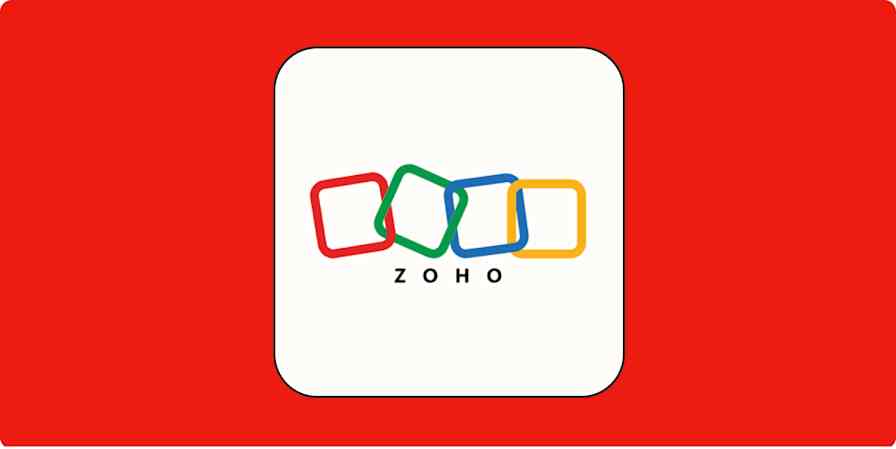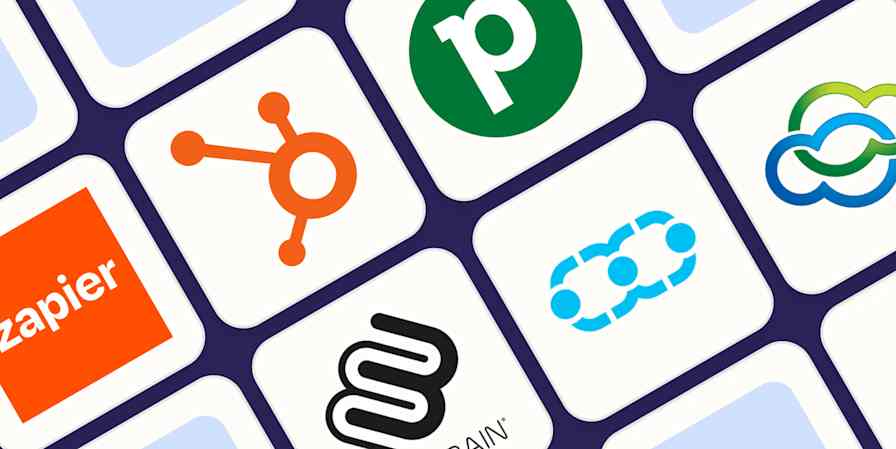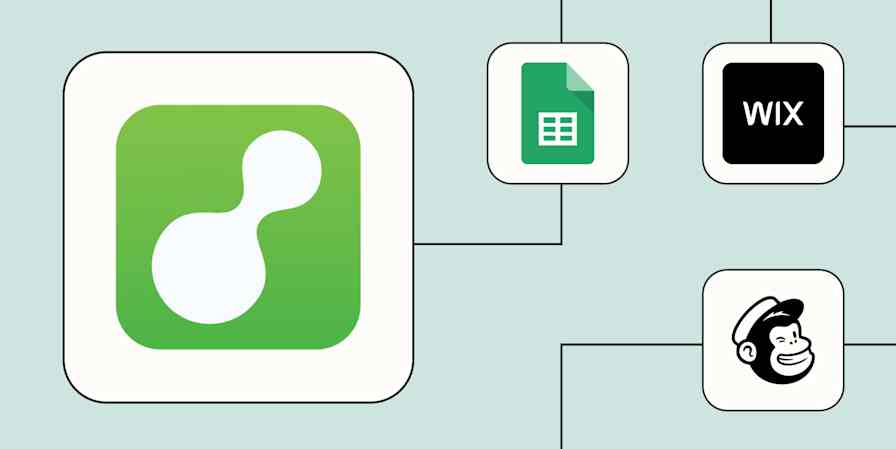Do you know that feeling when you’re standing in the aisle at the store, trying to decide which bottle of olive oil or bag of coffee beans to buy? There are so many options, with quite a few good choices. They’d each get the job done. Maybe one would taste a bit better, but it’s late and you need to get home, so you just grab one and go on.
Picking out an app can be similar. There are so many similar apps for any one task, it can be almost impossible to pick between them. At least with an email or notes app, you can easily switch to another with little trouble. Pick one and move on. But when you’re picking something as crucial to your business as a CRM (customer relationship management) app, you want to know you’re getting the best one for the job.
So we asked around, to see which CRMs various entrepreneurs, established companies, freelancers and more use for their work, and why they picked them. Here are some of the best reasons why you should pick any of the CRMs we’ve covered, and some great ideas for how they can help your team get more done in less time.
Picking the Best
While window shopping can be fun, at some point you have to commit to a system to use.
Gray MacKenzie, GuavaBox Co-Founder
Perhaps it's best to state the obvious from the beginning: there is not one best CRM. Each one has its advantages and unique features. Of the 35 apps we've reviewed so far in our CRM series, no two are exactly the same. There are similarities, sure, but each one has its own ways to manage contacts, unique interface, integrations, and more—you're bound to find one that fits your needs better than another.
Here are some ways that various teams picked their CRMs, and why they've worked well for them.
Go for Something Simple and Cheap
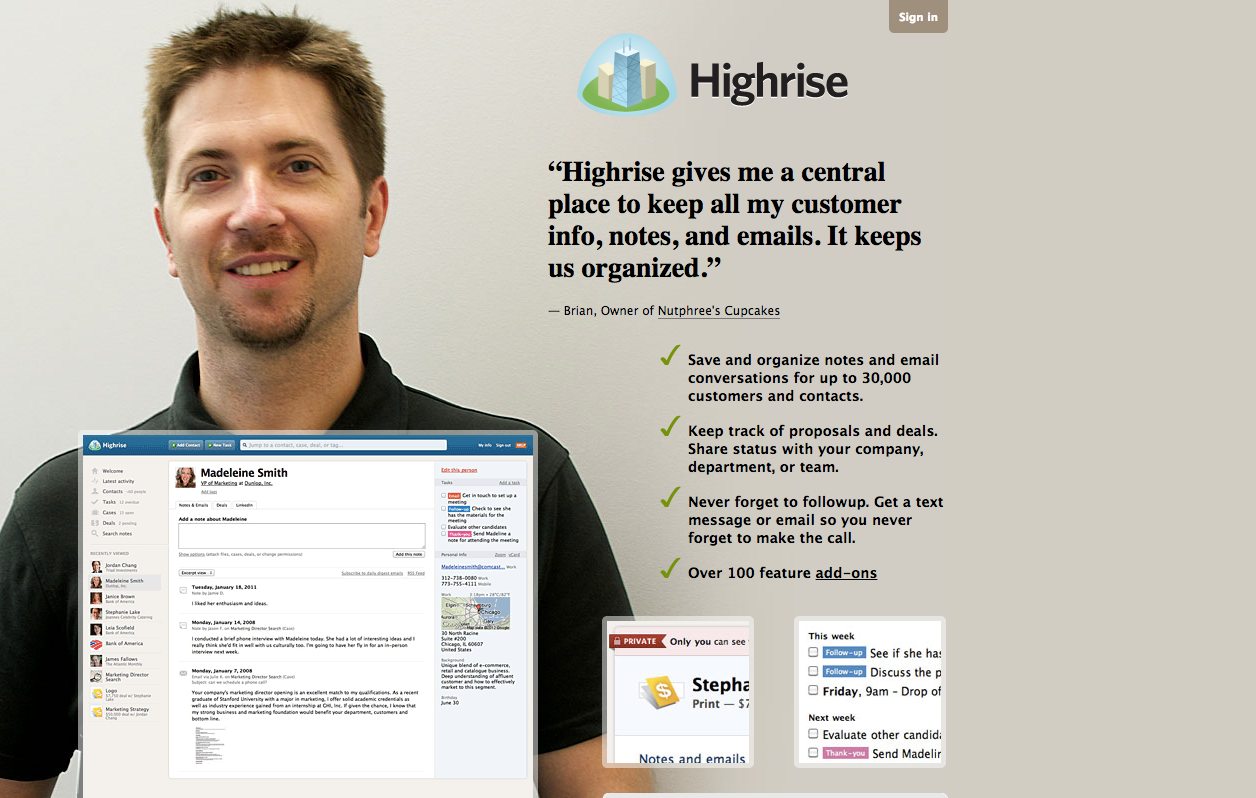
Picking a CRM can be overwhelming, but using your CRM shouldn't be. There are several simple CRMs that can help you get much of the benefits of a CRM without the confusion of custom deal flows and more, and cheap options that won't overwhelm your budget as well. That's why the TruPar team picked Highrise.
"It was cheap and easy to get started. I didn't want or need something so complex, or as expensive as Salesforce," says Sean McDonnell, the company's co-founder.
Price and simplicity also played a part in why Brittany Berger, a content marketer, picked Insightly.
"I don't work in sales or frequently deal directly with customers," says Berger. "I use the free version of Insightly to manage relationships with journalists, influencers, guest bloggers, etc. [It] just makes it easy to keep track of relationships."
Self-hosted CRMs—apps which you can download and run on your company's own servers—can also be very cost effective if your budget is the most important criteria. They won’t be free, but since you’re only paying for the server to host them on and perhaps some IT time to set them up and customize them for your team, they will often work out quite economically over time. That’s why Kartik Isvarmurti, CEO of VMB BPO, choose the free SugarCRM Community Edition (which is now unavailable, but you can use SuiteCRM or other open-source CRM apps in the same way).
"I pay only $35 per month for web hosting and I have around 15 users on the CRM," says Isvarmurti. "On any other CRM I would be paying at least $150 per month for 15 users."
Customize All the Things
Of course, simple CRMs have their limits too, and sometimes the best option is to get something that's incredibly flexible so you can tweak it and make it work exactly the way you want. Customizability is one of the first characteristics people mentioned when asked why they picked their CRM.
The most well-known CRM of all, Salesforce, has a reputation for being highly customizable. So while its interface may not be as sleek as some CRM apps, you can tweak almost everything—from custom fields to database views—making it into the app you want. And it works with almost everything.
"[Salesforce]’s flexibility to integrate with our own internal data sources as well as third party applications made for a very robust and powerful CRM system," says Jeremy von Halle, director of business operations at BellyCard.
But Salesforce is far from the only customizable CRM. Contactually's one of the simpler CRMs, and yet its customizability is why Zapier user Seth Fischer picked it for his work.
"[Contactually] allowed me to setup system to remind me to reach out to customers based on buckets/classifications," says Fischer. And Podio, the multipurpose app that includes hundreds of tools—including a CRM—to keep your business working, is also loved for the many ways you can customize it.
"Podio is highly customizable, [and] integrates beautifully with Zapier," says Jesus Villalobos, another Zapier user. "Definitely an underdog in the CRM world."
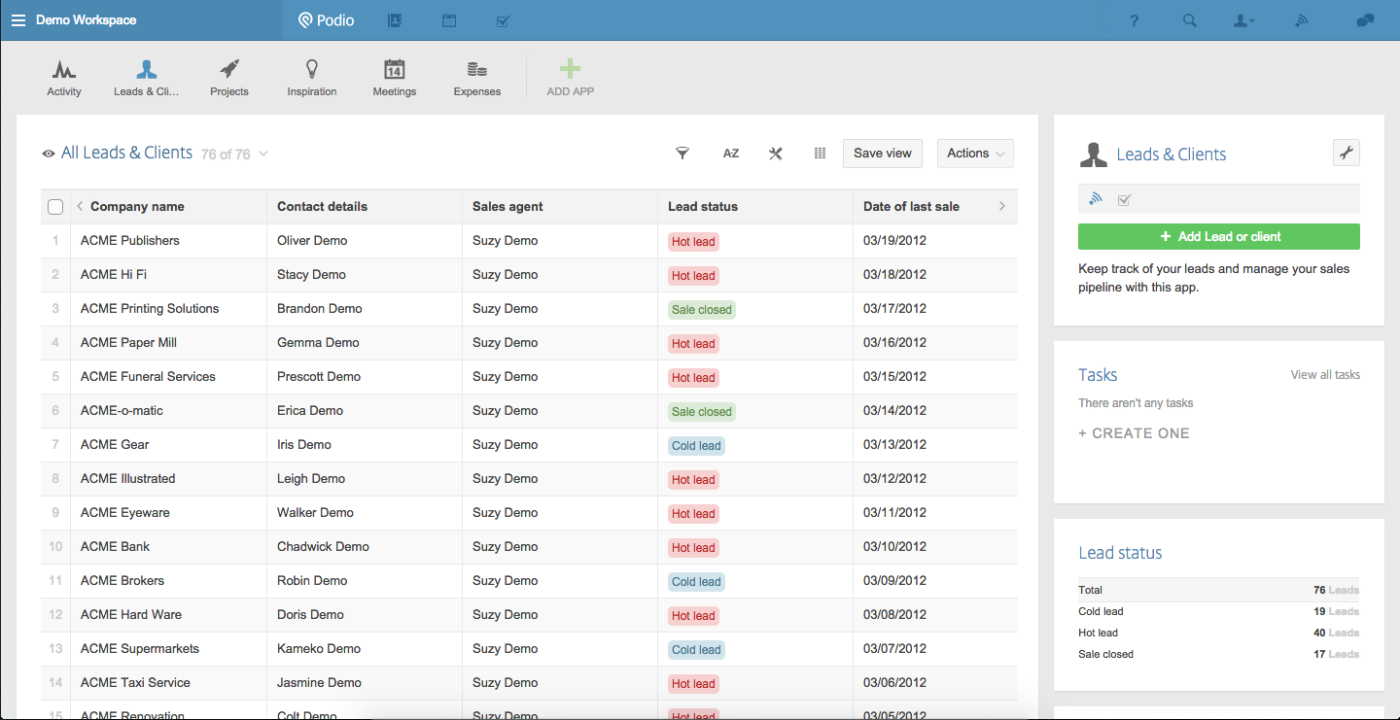
Self-hosted CRMs are especially great in the customizability department. That's why the Price Markets team chose SugarCRM Community Edition for part of their work (which, while now unavailable, you can use SuiteCRM or other open-source CRM apps in the same way).
"SugarCRM was a straightforward and extremely customizable CRM that we could develop further according to our needs in-house as we host it ourselves," says A.B. Talei, Price Markets' head of business development. But then, even hosted CRMs with public APIs can be quite flexible if you're willing to put in the development time. That's what Nick Persico, former vice president of operations at Krossover and now co-founder of Smart Host, found with Close.io.
"It’s really easy for any engineer to use Close.io’s API to update lead statuses, add customer engagement data, and create visual dashboards," says Persico.
If you want to dig a bit deeper, you can build even more custom solutions using Zapier, an app automation tool. The DeedGrabber team used Infusionsoft's HTTP Post function to let that CRM do anything they want.
"Basically, any time an event happens (someone buys something, clicks an email, remains in a funnel for a certain time, pretty much anything you can conceive of) you can send an http post to another server that contains all the prospects' or customer's information in it, says Rick Dawson of DeedGrabber. "This integrates perfectly with webhooks in Zapier, so you can basically do anything with that information in another app that Zapier services, which is about anything you'd ever use."
Put Everything Under One Roof
Another good strategy in finding a CRM is finding one that'll work with the tools your team needs most. The Steam Train Creative team, for example, needs to use phones in their marketing, so they picked Agile CRM since it integrates with their RingCentral-powered phone system. Social media marketing is more important for the Convert team, on the other hand, so Nimble turned out to be the best CRM for their needs.
Then, on the other hand, you might want one app that brings everything together under one roof. That's what the multipurpose and marketing automation CRMs do best: they let you automate your email campaigns, manage invoices, and more all from the same app. It's this type of integration that led DeedGrabber to choose Infusionsoft. "[Infusionsoft is] a good solution overall because it incorporates your CRM, your email sending, your shopping cart, and pretty much all interaction with your customer, in one place where all the information is interconnected," says DeedGrabber's Rick Dawson. GuavaBox, on the other hand, needed great voice support, and thus choose Base. "With Base Voice, you can make and record calls directly from inside the app," says GuavaBox co-founder Gray MacKenzie. "This is amazing for situations where you have multiple team members working with a prospect or client, as well as long sales cycles where you might not remember what you said three months ago."
Get Something You're Used To
Or perhaps, you could pick something that fits into the apps that you're already using. That's what's great about Streak: it's a full CRM right inside of Gmail, so you don't even have to start using another app. You just keep using Gmail, now with the addition of a CRM. That's why Paul Griswold picked Streak. "I hate to have to switch between things, so having it living inside of our corporate Gmail was perfect," said Paul.
The next best thing can be a CRM that looks and works much like apps your team's already used to. The SPI team picked Insightly for that very reason. "The interface feels and interacts like a Google product so everything is very familiar," says SPI co-founder Jeremy Goodwin. That's also an advantage to kanban-style CRMs like Pipedrive, now that kanban project management has been popularized by apps like Trello. "Pipedrive is to CRM what Trello is to project management: A kanban based system that provides a visual backdrop for your sales system," says Lawrence Watkins, founder of Great Black Speakers.
Do More With What You Have
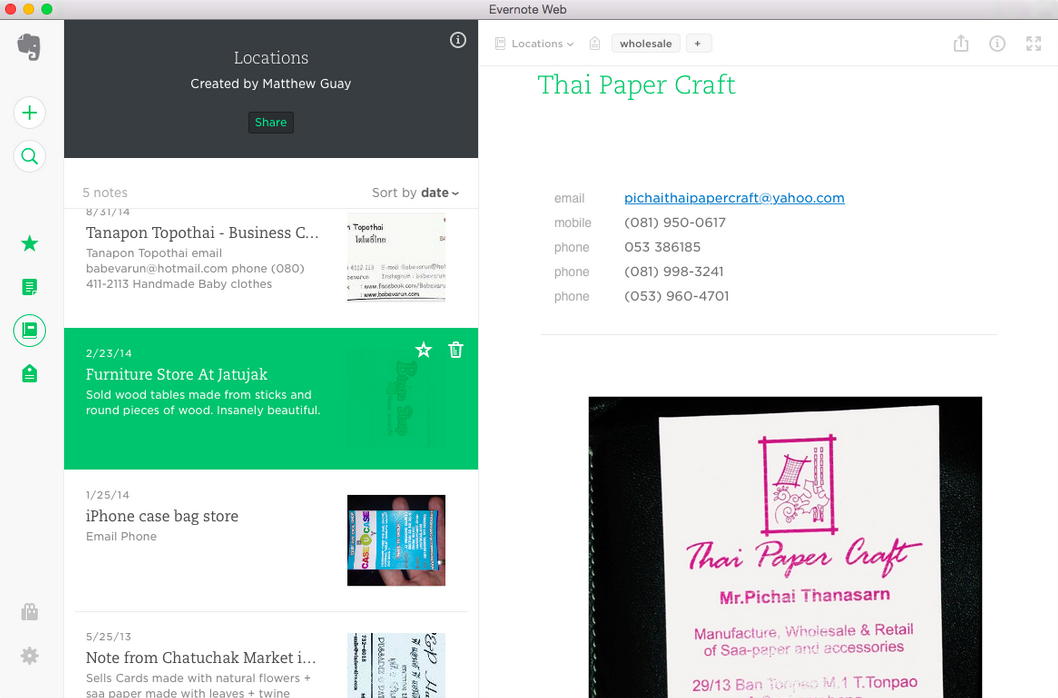
But then, you just might not need a full, advanced CRM, and another way to simplify stuff is just to use an app you already are using. As mentioned in chapter 2, even Google Contacts—the address book built into Gmail—can be a CRM of sorts, complete with notes about your contacts and quick ways to surface all of your conversations with them.
Even Evernote, the versatile notebook app, can fill the space a CRM would otherwise occupy. As Renee Shupe—a Zapier user who employs Evernote this way—says, "It works for me as I find most CRMs are weighted with too much stuff." Trello, the popular Kanban productivity app, is another great app that can be used as a quasi-CRM. The Thoughtbot team used it as a visual sales pipeline, since they're already using it for managing projects and more.
Depending on your needs, you just might find repurposing one of your existing apps as a basic CRM is also the best strategy for you. With Zapier to help you automate data collection and more, you might even find that your quasi-CRM is just as powerful as a "real" CRM.
Putting Your CRM to Work
The biggest barrier that we have is the same one that every company has: actually getting people to use the CRM.
Brad McCarty, FullContact Content Director
No matter which CRM you choose, the important thing is that you and your team actually use it. Picking a CRM may seem difficult, but getting all of your data into the CRM, making sure your team knows how to use it, and then learning to rely on it for all of your contact needs can be far more challenging.
Here are some great ways to make sure you get the most out of any CRM, from the teams who have CRMs that they love.
Fill a Need With Your CRM
You can pick out the shiniest CRM, customize it to work just the way your team works, and give everyone a day just to learn how to use the CRM, and you might later end up finding that the CRM never really gets used. After all, you could have the nicest hammer in the world, but you'd never use it if you didn't think you needed to use it in your work.
"The biggest barrier that we have is the same one that every company has actually getting people to use the CRM," says Brad McCarty, the content director at FullContact. "There are so many good ones, but every one of them is useless unless it becomes an active repository of information." And no one is going to be very motivated to take on the extra work of adding info to a CRM if they don't see how it benefits them.
That's why, first off, you could make sure your CRM actually fits a need your team has. Don't get a CRM just to have one; get one to fix a problem you have or to do something that you've struggled to do in the past. That's why when the Sendhub team needed an easier way to know what'd been said to customers, they picked RelateIQ.
"RelateIQ makes it easy for us to have insight into what is going on with a new lead or current customer, so nobody on our team is out of the loop and can pickup where the last person left off," says Sendhub sales team member X'Zavierr Garland. RelateIQ filled a need, making it a perfect CRM for them.
Automate Everything
Once you're sure it fills a need you have, make sure it is easy for your team to use by automating everything as much as possible. As Parker Conrad, CEO and founder of Zenefits says, "If a CRM requires you to enter data, you just won't use it." So use your CRM's built-in integrations with your website, forms, email, contacts apps, and more to automatically gather your contact info and more. The Krossover team does this so well with Close.io, they never have to enter anything into their CRM.
"Every action we take on a lead or opportunity is tracked automatically, so there’s no data entry!" Says Persico.
Then, you can get even more data automatically added to your CRM with Zapier. Any app that works with Zapier—your notes apps, social networks, forms and more—can automatically be sending data to your CRM. It just might be the different between your CRM working for your team or not. As TruPar's McDonnell says, "Zapier allowed us to automate a ton of stuff, so much so that I probably wouldn't have actually used Highrise without it due to my limited bandwidth and the time cost of manual data entry."
The same is true for the BillCutterz team; when their app was featured on ABC and they received over 10,000 sign-ups in a day, Zapier was the only thing that made it possible to keep their CRM up-to-date.
"There's no way that I could have put all those people in Sugar [CRM] by myself," says Sydney Alcala, vice president of BillCutterz.
Create SugarCRM leads from new submissions to Facebook Lead Ads
Add new Mailchimp subscribers to Highrise as new contacts
Data entry isn't the only thing you'll want to automate with your CRM.
"One mistake that many businesses make when creating an automated workflow is that they forget to 'close the loop' with feedback that confirms an action was completed," says Tom Iannone, senior integration manager at Trekksoft. That's why marketing automation CRMs like Pipedrive let you make workflows that'll automatically send followup messages to your customers at the times that make the most sense for your business.
That's what both Trekksoft and Lawrence Watkins, founder of Great Black Speakers, use to get more done and stay in touch with customers.
"At every stage in our pipeline, we have if/then statements set up to do things automatically," says Lawrence. It helps them get more done without any extra work—something that'll be sure everyone on your team loves your CRM.
Send emails via Gmail when new Pipedrive deals reach certain stages
Add new Unbounce form submissions to Pipedrive as deals
Tweak Your CRM
You don't have to have a self-hosted or hand-coded CRM to get it to work the way you want. Almost every CRM will let you add your own tags and custom fields, and you can use them to make workflows work just about any way you want. And if you have a more advanced CRM, you can make custom views, workflows, and more to get your CRM to work the way your team is used to working.
"Custom fields are one of the most important factors when creating a successful workflow," says Treksoft's Iannone. "Other than hiring a developer, this is the best way to build a solution that is custom fit to your business model." You can use them to track a variety of things, such as geolocation—as the Trekksoft team relies on to keep track of their customers' time zones and more—or special fields designed just to trigger Zapier and start actions in other apps.
Just make sure you don't customize so much that everything becomes overwhelming. Eric Levitt, co-founder of YOLO Publishing, says with his team's use of Infusionsoft that "[it's] a very moldable platform but needs to be kept clean." That's why his team has worked hard to find the workflow that'll work for them. "The biggest challenge we have had over the years is the initial setups of products and workflow," he says.
So customize, but don't overdo it. Think through the processes that your team already has in place, and the pieces of data that you already need to collect, and make sure to implement them into your CRM. If you plan ahead and customize right from the start, you'll have a far better chance of making your CRM a tool that fits your team's needs perfectly.
Listen to Your CRM
CRMs don't have artificial intelligence—not yet, anyhow—but they can be smart enough to let you know what you need to be doing. So listen to it. It's easy to be overwhelmed by notifications these days, so your first inclination might be to turn off the notifications whenever you install new apps. But you won't want to do that with your CRM.
Instead, tweak your notification settings to let your CRM send you the most important stuff, the things you otherwise might miss. That's why the Savoury Chef team has given CapsuleCRM permission to bug them.
"If a case is of high importance, it's synced so that it notifies a manager by SMS and email that they need to take action immediately," says the company's co-founder, Kyle Nordman. "With Zapier's filter function, we can assign followup inquiries to specific team members based on keywords, or inputs from our form submission, or lead generation systems. It keeps us very quick and on top of things."
Send emails in Gmail when new deals are added to a stage on Pipedrive
Get email alerts for new Capsule tasks assigned to you
Depending on your CRM, you'll find different things it can notify you about.
"One of the best features [in PipeDrive] is "the 'deal rotting' feature which notifies users when a deal is stalling," says Trekksoft's Iannone. Or, you might find ingenious uses of existing features if your CRM doesn't have the notifications you want. The Bizzabo team uses tasks in Base, now known as Zendesk Sell, tasks as an easy way to notify people in their team about what they need to do.
"The tasks are easily created and dismissed and provide a quick way to notify each other that a contact or lead needs attention," says Alon Alroy, Bizzabo co-founder.
Or, you can use Zapier to make the notifications you want. You can integrate Zapier with your CRM to send you an SMS when a new contact is added, a push notification when a lead's status changes, or a celebratory message in your Slack or HipChat room when a deal is closed. With data automatically flowing into your CRM and it automatically notifying you when stuff happens, you might find that you're using your CRM without ever having to actually open it.
Use the Best Apps for the Task
Your CRM is great—it should be if it's the one you've decided to use—but that doesn't mean you'll love everything about it. You might wish it had more options to customize the emails it sends, or that it had better forms for capturing leads. That's OK, since you don't have to only use your CRM's built-in features.
Instead, you can pick your favorite apps for each task, use them instead of your CRM's built-in features, and then use Zapier to keep everything in sync. For example, Dawson of DeedGrabber wanted more email features than Infusionsoft offered, so he used Zapier to integrate with Mandrill, a transactional email app, and send emails based on CRM actions. The VMB BPO team had a similar problem when SugarCRM's forms weren't as robust as they wanted, so they use Wufoo for their forms and use Zapier to integrate them with SugarCRM.
Automatically Create SugarCRM Leads from Wufoo Form Submissions
Stay Up-to-Date
The CRM you choose doesn't have to just work great today. It also needs to grow with your team and work with the services and devices you'll need to use in the future.
"It is important to pick a CRM that is consistently working to improve their products," says Great Black Speakers' Watkins. It's bad if you pick a CRM and your team doesn't use it, but it's far worse if you put the time into getting a CRM to work for your team and then find that it breaks or shuts down soon after.
That's why you should be sure to look at the blogs and social media accounts of the CRM you pick before you decide to use it. Make sure it's in active development, with a team that's still working to improve it and add new features over time. If you can see how it's improved over time, you'll feel far better about trusting it with your future. That's why MacKenzie's team at GuavaBox feels good with using Base.
While window shopping can be fun, at some point you have to commit to a system to use. Base doesn't have every single feature I'd like to see, but it gets the job done and it continues to improve over time," MacKenzie says.
With everything from advanced CRMs like Salesforce to multipurpose apps like Podio, from the simplicity of Google Contacts to the advanced marketing automation of Infusionsoft, there are CRMs for everything. No matter which you choose, you can make the CRM of your choice be your CRM the way these and others have.
Just dive in, start using it the way that works best for you, and learn to rely on it as the one place for your contact interactions. Automate away the tediousness with your CRM’s built-in tools, and tie it in with all of your other apps with Zapier. You’ll quickly find that your CRM is an extension of your brain, the one place your team checks for info, and almost like a new team member you didn't even know you needed before.
Coffee aisle photo courtesy Lamentables on Flickr.



